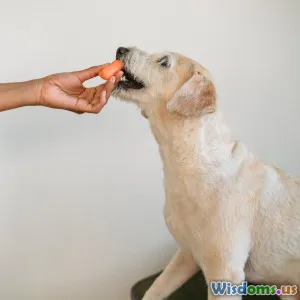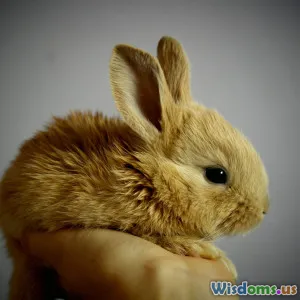
Is GrainFree Food Really Better for Your Pet A Closer Look at the Facts
9 min read Discover if grain-free pet food truly boosts your pet’s health or if it's just a fad, by exploring science-backed facts. (0 Reviews)
Is Grain-Free Food Really Better for Your Pet? A Closer Look at the Facts
When it comes to our beloved pets, every owner wants the best nutrition possible. One diet trend that’s captured significant attention in recent years is grain-free pet food. Advertised as a superior, often more natural option for dogs and cats, grain-free diets promise improved digestion, fewer allergies, and enhanced overall health. But is this hype backed by science, or is it simply a marketing gimmick? This article delves deeply into the facts about grain-free pet food to help you make informed decisions about your pet’s diet.
Understanding Grain-Free Pet Food: What Does It Mean?
Grain-free pet food is formulated without common cereal grains like wheat, corn, barley, and rice. Instead, these diets typically rely on ingredients like potatoes, peas, lentils, or chickpeas as alternatives for carbohydrates. The grain-free movement began as a response to perceived grain allergies and the desire for ancestral-like diets that mimic what wild carnivores might consume.
According to the American Veterinary Medical Association (AVMA), grain allergies in pets are extremely rare, affecting less than 1% of dogs and cats. This raises an important question: if true grain allergies are so uncommon, why is grain-free food so popular?
The Alleged Benefits of Grain-Free Diets
1. Allergy Relief and Skin Health
One of the most commonly cited reasons pet owners switch to grain-free food is to alleviate skin issues, itching, or food allergies. While some pets benefit from limited ingredient diets due to allergies, the culprit is more often a protein source like beef or chicken, rather than the grains.
Veterinary dermatologists emphasize conducting proper allergy testing before switching diets, as unnecessary replacements can lead to imbalanced nutrition.
2. Improved Digestion
Proponents assert that grain-free foods are easier for pets to digest since they exclude “hard-to-digest” grains. Nonetheless, grains are sources of essential fibers and nutrients that support gut health. In fact, many grains contain prebiotics that foster beneficial intestinal bacteria.
Recent studies show little evidence that common grains cause digestive upset in healthy pets. Instead, dietary fiber variety—including grains—improves stool quality and nutrient absorption.
3. Ancestral Diet Argument
Some supporters claim that because wild canines and felines primarily consume prey without grains, domesticated pets should too. While this appeals to the idea of natural feeding, it overlooks domesticated pets’ evolutionary adaptation to mixed diets.
A pivotal 2013 study published in Nature found genetic adaptations in dogs facilitating starch digestion—a significant divergence from wolves. This paradigm suggests grains are well tolerated by many pets.
Are There Risks or Concerns Using Grain-Free Food?
1. Association With Canine Dilated Cardiomyopathy (DCM)
Between 2018 and 2020, the U.S. Food and Drug Administration (FDA) investigated an unexpected spike in cases of dilated cardiomyopathy (DCM), a serious heart condition, in dogs fed grain-free diets rich in peas, lentils, chickpeas, and potatoes.
While definitive causality is yet unproven, the FDA believes these ingredient patterns may interfere with amino acid availability crucial for heart muscle health. This has led several vets to urge caution and to recommend conventional, grain-containing diets for breeds at higher DCM risk.
2. Nutritional Balance & Oversight
Elimination of grains requires manufacturers to carefully balance other nutrient sources. Pets fed homemade or low-quality grain-free foods risk deficiencies or excesses in vitamins, minerals, and fiber.
Pet nutritionist Dr. Lisa Freeman notes, "A balanced diet is critical. Fads can sometimes neglect essential nutrients and unwittingly cause harm. Always consult your vet before drastic diet changes."
3. Higher Cost Without Clear Benefits
Grain-free diets, often touted as premium, tend to be more expensive. Data from market analysis firm Nielsen reveal a 20-30% price increase compared to standard pet foods. Without concrete evidence that grain-free translates to better health, this upcharge may not be justified for every pet owner.
Making An Informed Decision: What Should Pet Owners Do?
Assess Your Pet’s Unique Needs
Since true grain allergy is rare, switching diets should be based on accurate diagnosis rather than trends. If your pet suffers from allergies or digestive issues, veterinarians recommend elimination trials to pinpoint allergens.
Consult With a Veterinary Nutritionist
Veterinary pros can analyze the entirety of your pet’s diet to ensure it’s complete, balanced, and appropriate for life stage and breed.
Read Ingredient Lists Critically
Quality matters more than grains or no grains. Look for named protein sources as first ingredients and avoid excess fillers or artificial additives.
Watch for Emerging Research
Nutrition science evolves constantly. Following reputable veterinary organizations and FDA updates can help you stay informed about any new findings.
Real-World Insights: What Are Vets Saying?
Dr. Karen Becker, a well-known integrative veterinarian, states, "Grain-free diets can be beneficial for pets with specific sensitivities, but they’re not necessary nor inherently healthier for all dogs and cats."
Moreover, a survey of veterinary cardiologists highlighted continued caution regarding grain-free diets and heart health, showcasing the importance of case-by-case assessments rather than generalized switches.
Conclusion
The grain-free pet food trend is rooted in understandable desires to optimize our pets’ health, but the science does not support the idea that grain-free automatically means better. While grain-free diets provide essential alternatives for pets with genuine allergies or intolerances, the majority of pets thrive on balanced diets including grains.
Furthermore, the unresolved questions regarding potential cardiovascular effects linked to grain-free formulas underscore the need for careful consideration and consultation with veterinary professionals. Price premiums don’t always equate to greater health outcomes — quality, balance, and suitability remain paramount.
By approaching pet nutrition with critical analysis and expert guidance, you can give your pet the healthy diet it deserves beyond any passing food fads.
References
- American Veterinary Medical Association (AVMA). "Pet Food Allergies: How Common Are They?"
- U.S. Food and Drug Administration. "Information on DCM and Grain-Free Diets"
- Freedman, L.P. & colleagues. (2013). "Genetic Adaptations in Dogs for Starch Digestion." Nature.
- Freeman, L. "Balanced Diets Versus Food Trends in Pets". Journal of Veterinary Nutrition.
- Nielsen Pet Food Market Report 2022
Author Bio: This article was crafted by an expert in pet nutrition and veterinary science, dedicated to delivering factual, actionable information to pet owners seeking the best care for their animals.
Rate the Post
User Reviews
Popular Posts





















